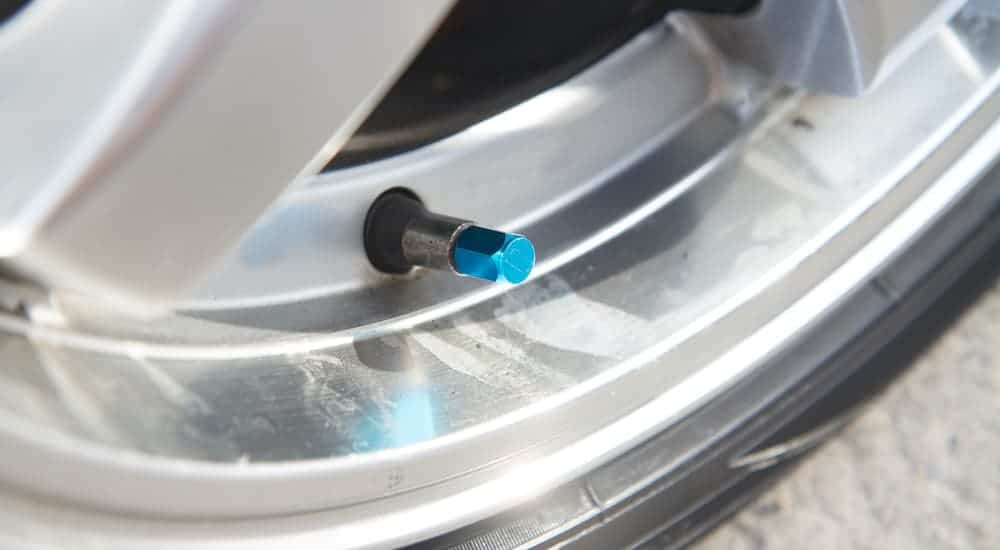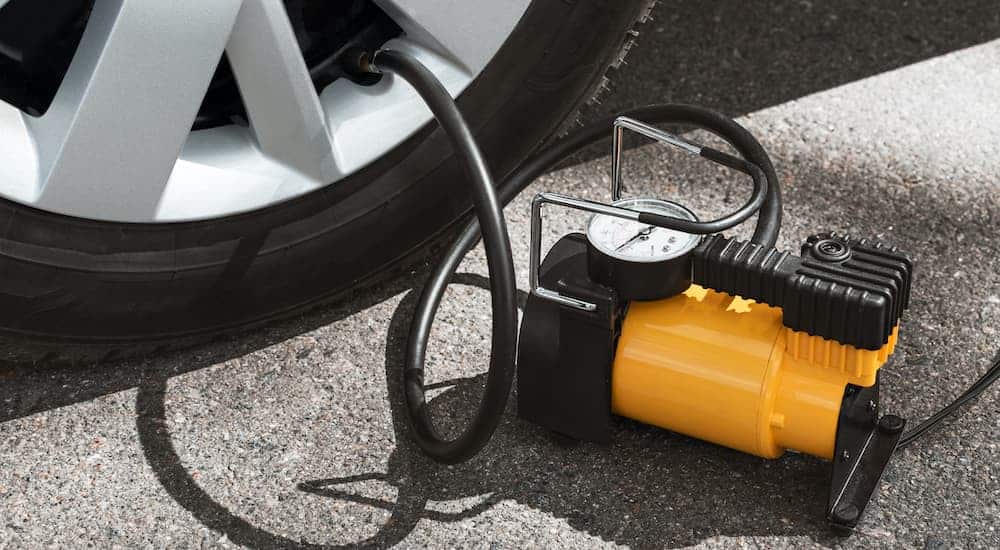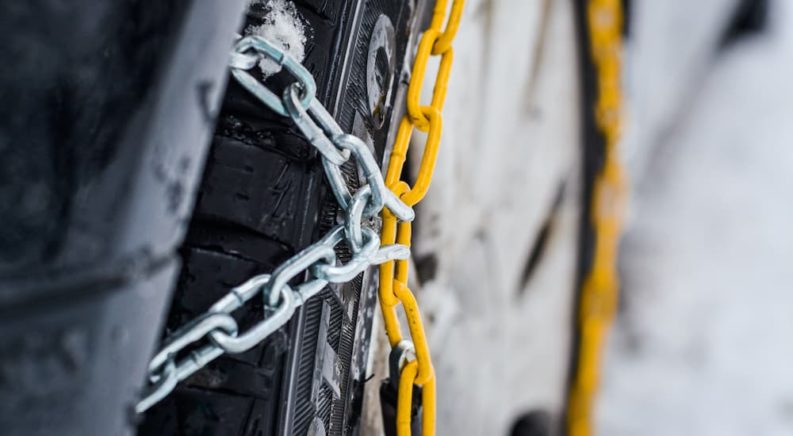Your tires are some of the most important parts of your vehicle. Not only are they the parts that actually roll you down the road, but they’re also your vehicle’s only contact with the road itself. Flexible but strong, ensuring safety and also speed, good tires just get you where you need to go. A good tire shop should be one of your go-to places for vehicle maintenance because a great set of well-maintained tires improves just about every aspect of your vehicle.
While the quality of tires varies based on what’s most appropriate for your vehicle – including make, model, year, and trim – and there are several great-quality tire brands at your dealership’s tire shop, tire accessories are another issue entirely. Some tire accessories seem like necessities but ultimately improve very little; others are essential for safety, utility, and sprucing up how your vehicle looks. We’re breaking down some of the most common automotive tire accessories, sharing our thoughts on whether they’re worth the money, and offering advice on installing them for the best results.
Snow Chains
Let’s start with an accessory that, depending on the individual you ask, may be perceived as a life-saving necessity. Driving in snow can dramatically increase your risk of losing control of your vehicle and getting in an accident, even if you have a four-wheel drive or all-wheel drive vehicle. Snow chains are metallic, net-like fittings designed to give your vehicle extra traction on what could be slippery conditions.
There are several different types of snow chains, including products with a ladder-like design that forms perpendicular stripes across your tires and diagonal cross-member designs that zig-zag around your tires. Shop for universal fit chains that can stretch or retract to securely fit just about every tire size. Traction cables are often advertised as snow chains, as they’re also metallic fittings that increase snow traction, but some experts perceive them as the less durable option because they can snap or break. Installation varies drastically by product but usually involves laying the chains down flat in front of your tires, driving directly onto them, parking, and then wrapping the chains around each tire, being sure to create a snug – not tight – fit.
Thankfully, every product comes with an easy set of instructions on how to arrange, drive on, maintain, and eventually remove the chains. Some even come with a handy snow chains container for out-of-season storage. Note that snow chains are sold in pairs and should be installed on your drive wheels – the rear-wheels for a rear-wheel drive truck like the Chevy Silverado, for example.
Problems with snow chains, however, can deter some shoppers. For example, snow chains are never to be used on surfaces that aren’t covered with snow or ice. Doing so can press concentrated force into your tires and damage them. Poorly fitted snow chains can damage your vehicle’s wheel wells, while chains that loosen or snap can entangle with your brake hoses and interfere with braking. Also, snow chains aren’t invincible and can eventually snap, break, or rust, at which point they’re not secure enough for safe driving – driving faster than 30 mph will increase the chance that your chains will fail and damage your vehicle.
Finally, be aware that snow chains can increase traction but aren’t a guarantee that you or your vehicle will be safer in winter storm conditions. Overall, you should practice caution when driving in snow whether or not you’re using snow chains. Chains are ideal for truck drivers and others who have no choice but to drive in unsafe conditions, but others should use their best judgment.
Valve Stem Caps
This one is just for show, but you can actually replace the valve stem caps on each of your tires with specially designed ones. Popular options include caps with vehicle logos in shiny aluminum or caps that provide unique pops of color. Simply twist off the plain, black ones built onto your tires and twist on more decorative caps. There are no benefits of these products beyond a little bit more style, but that sure doesn’t hurt you. However, if you install metal valve stem caps, make sure that they don’t interfere with your vehicle’s tire pressure monitoring system (TPMS). While rare, this is possible.

Spare Tire Mounts
Vehicles designed with a rear-mounted spare tire are becoming less and less common by the year, but there are still options for those who like the rugged look and convenience of hanging their spare tires. In terms of DIY-ing this job, though, your options are limited. Installing a spare mount on the bumper requires some serious welding to ensure it won’t fall off. Most people go to fabricators to professionally install this equipment, which must be fitted to the vehicle’s exact bumper and rear door dimensions while also suiting the exact tire size appropriate to said vehicle.
Spare tire mounts in truck beds, meanwhile, are simple enough. First, you’ll need to purchase a mount that’s suited to the size of your spare tire. Then, you’ll need to drill a hole in a bed wall or the center floor of the bed itself; sizes are specific to the screw designed with each mount. Be sure to follow the product directions exactly. Secure the mount with as few as one large bolt, then hang the tire in place. Most of these truck mounts are simple enough in their frame design that you can slip a tire on and off without worrying about it coming loose during a rigorous drive.
Spare Tire Covers
As for spare tire covers, you get the added benefit of protecting the tire from UV sunlight, salt, extreme cold, and grime kicked up from the drive. They’re easy to fit and remove, provided that you purchase the right size. Check out the diameter of your spare tire written directly onto its side before shopping for a cover. Note that while the cover will protect your spare from most environmental damage, it will do virtually nothing to protect the tire from theft. If you are worried about someone stealing your spare, invest in locking lug nuts.
Tire Repair Kits
Your vehicle maker should have included these supplies when you purchased your vehicle, but if you can’t locate them, there’s a chance something was left out of a private sale exchange. Tire repair kits are essential to keep on-hand, so shop for lug wrenches, jacks, lug nuts, and even tire plug kits. If you’re not going to shop directly from the manufacturer or dealership, you must be sure that you’re shopping for universal fit supplies. Otherwise, you’ll be just as helpless as someone without tire replacement kits. For extra security, consider shopping for flat and puncture repair kits. Instructions vary based on the kit you buy, but most are very easy to follow along with and involve you locating a puncture, then injecting it with a rubbery plug.

Portable Air Compressors
Most modern vehicles are designed with tire pressure monitoring systems, which sense the air level in your tires and notify you of uneven air pressure or even a flat. However, TPMS can only tell you if a tire is low, it can’t fix it for you. So it’s still important for you to have a portable air compressor or pump on-hand in case you notice a flat or even suspect reduced fuel economy, which can be the fault of slightly under-inflated tires. Routinely check tire pressure manually, especially during seasons when the weather fluctuates (this can change the air pressure in your tires drastically), and repair borderline flats yourself. We’d recommend a compressor that’s 12-volt compatible, but more powerful units can run directly off of your car’s battery.
What Matters Most
Overall, tire accessories like these aren’t for everyone. However, some, including portable air compressors and repair kits, are important for ensuring the longevity of your tires. That being said, nothing you could keep on-hand could be more important than conducting regular tire maintenance. Have your tires professionally inspected and rotated regularly to keep them going as long as possible.
When it comes to tire care and accessories, though, nothing is more valuable than having good tires to begin with. Be sure to shop at a tire shop that you trust for quality tires that are sure to last, alongside a great warranty or service plan for assistance in the event of the unexpected. Even better, many tire companies offer generous rebates so you can save on the best-quality tires for your vehicle. Vehicle tires may be a costly investment, but for the most part, the better your up-front investment, the more peace-of-mind, safety, and stability you take to the road every day.

